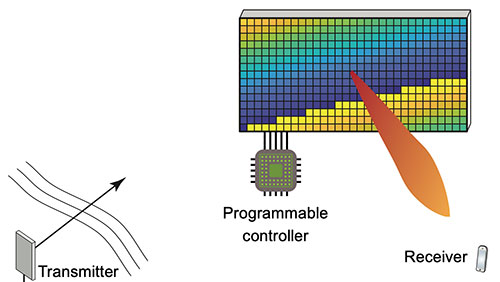Reconfigurable Intelligent Surfaces: A Signal Processing Perspective With Wireless Applications
Antenna array technology enables directional transmission and reception of wireless signals, for communications, localization, and sensing purposes. The signal processing algorithms that underpin this technology began to be developed several decades ago [1], but it is first with the ongoing deployment of the fifth-generation (5G) wireless mobile networks that it becomes a mainstream technology [2]. The number of antenna elements in the arrays of the 5G base stations and user devices can be measured at the order of 100 and 10, respectively. As the networks shift towards using higher frequency bands, more antennas fit into a given aperture. The 5G developments enhance the transmitter and receiver functionalities, but the wireless channel propagation remains an uncontrollable system. This is illustrated in Fig. 1(a) and its mathematical notation will be introduced later. Transmitted signals with three different frequencies are shown to illustrate the fact that attenuation can vary greatly across frequencies. Looking beyond 5G, the advent of electromagnetic components that can shape how they interact with wireless signals enables partial control of the propagation. A reconfigurable intelligent surface (RIS) is a two-dimensional surface of engineered material whose properties are reconfigurable rather than static [4]. This article provides a tutorial on the fundamental properties of the RIS technology from a signal processing perspective. It is meant as a complement to recent surveys of electromagnetic and hardware aspects [4], [7], [11], acoustics [12], communication theory [13], and localization [8]. We will provide the formulas and derivations that are required to understand and analyze RIS-aided systems using signal processing, and exemplify how they can be utilized for improved communication, localization, and sensing.
PDF Abstract